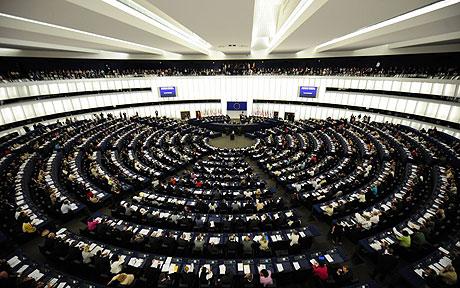
(AFP Photo)
Barclays Bank Egypt’s (BBE) profit spiked in the third quarter of 2013 to reach EGP 325m, representing a 49% increase compared to the corresponding period last year. It was driven by a robust performance across all lines and segments, despite the challenging economic and political situation, the bank said.
The bank’s net profit rose to reach EGP 93m in Q3 2013 comparing to a loss of EGP 16m in Q3 of 2012. Treasury closing in the same period also increased to reach EGP 213m versus EGP 173m in the third quarter of last year.
The lenders attributed their “improved profitability” to the 12% growth on net interest income, which reached EGP 756m this year compared to EGP 677m in 2012, according to a statement from BBE.
In addition to an increase of 26% in the net commission income, the bank’s impairment charges have dropped from EGP 48m in 2012 to EGP 31m, representing a 60% decrease, “in spite of the negative effects of the downgrading,” the bank said.
In July, global research consultancy firm IHS downgraded Egypt’s banking sector to “significant risk”, citing the banks’ large holdings of sovereign debt, which comprise an estimated 40% of the country’s GDP.
“Barclays Bank Egypt continued its focus on improving efficiency and cost control, which was reflected in achieving a cost-income ratio of 41%, with continuing to apply salary increase, investment in systems, infrastructure and people,” Mohamed Sherif, BBE board member and finance director, was quoted in the statement as saying.
Customer deposits are expected to grow after being reduced throughout the year, the bank said.
BBE achieved a return on equity of 16% comparing to 12% last year, while maintaining the return on assets at 2%. Return on risk weighted assets reached 5% versus 3% over the same period last year, “which reflects improvement in risk management”.
According to the statement, BBE is capitalised with a capital adequacy ratio sufficiently in excess of the regulatory requirement.
“New retail liability accounts increased by 19%, where BBE offered the new unlimited account providing a large variety of benefits to the customers,” read the statement.
“It is likely that the challenging environment will continue, and we know that we have a lot more work to do,” said Edward Marks, Managing Director of Barclays Egypt. He stressed the importance of “focusing on the bank’s future strategic priorities by creating synergies between Barclay’s main segments: retail and corporate business.”
The Ministry of Finance named in November the top five banks that trade in treasury bills and treasury bonds during the first quarter of the 2013-2014 fiscal year. Barclays Egypt was ranked the fifth in the list of primary markets in the trading of treasury bills.
In the secondary market, Barclays also ranked the fifth with a market share of 7.92%.



